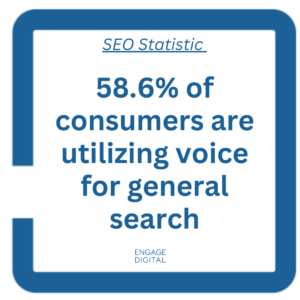In a digitally driven marketplace, a potent online presence forms the core of competitive relevance. Businesses — both big and small — must harness the power of reaching their audiences through the world of search engines. Thus, the importance of an efficient search engine optimization (SEO) strategy becomes unparalleled. It’s not just a ‘good-to-have’ anymore but forms the lifeblood of contemporary firms seeking growth and visibility.
Yet, amidst this digital hustle, some jewels of SEO wisdom often skip conventional discussions, despite their power to significantly boost the attractiveness of your business website. The journey into enhancing SEO isn’t merely about the popular best practices but also about uncovering lesser-known strategies. And it’s the exploration of such little-known tips that this discussion seeks to illuminate.
Utilizing LSI Keywords
First, we turn to an often-underappreciated strategy for boosting business website visibility – employing Latent Semantic Indexing (LSI) keywords. This concept goes beyond the traditional practice of just integrating primary keywords into your website content, a tactic familiar to most.
Interestingly, LSI keywords are not just synonyms of your central keyword. Instead, they’re conceptually relevant to it and often used within the same context. By incorporating these related terms, you’re essentially enhancing Google’s comprehension of your content. With this enhanced understanding, Google can match your website more accurately against a broader spectrum of search queries. Consequently, it helps in boosting potential rankings.
Notably, a survey by Ahrefs revealed that 0.3% of top-ranking pages ranked for a single keyword, while the majority ranked for multiple keywords. Thus, leveraging LSI keywords is a smart strategy to help your site perform better across various search queries, subtly expanding your digital footprint.
Optimizing Images for SEO
Another often overlooked aspect of SEO is image optimization. It’s a known fact that using visually appealing images enhances your content’s attractiveness. Yet, not many are aware that these images, when optimized correctly, can significantly contribute to traffic from search engines.
To start with, select images that are thematically relevant to your content. Only then can they add value to your viewers and be recognized as contextual by search engines. Once you’ve chosen the right image, attention must then be directed towards its filename and alternate text (alt text). Expert SEO advice suggests incorporating primary and secondary keywords into these elements. By doing so, search engines are more likely to associate your images with these keywords.
Finally, statistics denote the importance of capturing traffic from image searches. According to Moz, Google’s image search constitutes about 21% of total search volumes, further emphasizing the necessity of optimizing images. Implementing these tips can boost your chances of appearing in Google’s Image Search results, attracting more traffic to your website.
Capitalizing on Voice Search
The meteoric rise of digital personal assistants like Alexa, Siri, and Google Assistant has brought voice search to the forefront of SEO. Users increasingly turn to voice search to look for products or services, making this an avenue worth capitalizing on.
 Voice searches stand out due to their conversational nature. Unlike typed searches, which are often succinct, voice searches tend to be longer and formulated as complete questions. As such, optimizing your content to answer common queries in your domain can put you ahead of the competition in voice search results.
Voice searches stand out due to their conversational nature. Unlike typed searches, which are often succinct, voice searches tend to be longer and formulated as complete questions. As such, optimizing your content to answer common queries in your domain can put you ahead of the competition in voice search results.
Importantly, Barilla’s Voice Consumer Index revealed that 58.6% of consumers were using voice for “general searches,” a trend that is growing year over year. This is not to say they exclusively use voice for search, but that over half of the population does utilize voice search, with younger generations relying more heavily on it. Given this trend, businesses that adapt their content to suit the style and length of voice search queries could find themselves advantageously positioned in an increasingly voice-dominated search landscape.
Making the Most of Internal Linking
Our next SEO tip revolves around internal linking, a technique sometimes placed on the backburner, yet bearing substantial potential to boost time spent on your website.
By strategically connecting related content within your website via links, you effectively create a guided journey for your visitors. As users follow these breadcrumb trails, they end up spending more time exploring relevant material. For search engines like Google, this increased on-site time signals the provision of substantial value to visitors.
The numbers reiterated the strength of this strategy. As per an analysis by Relevance, a comprehensive internal linking structure could increase web page visits by as much as 40%. Hold firm the reigns of this seemingly essential yet potent SEO tip to lead users through your website and keep them engaged longer.
Regularly Updating Old Content
Lastly, we delve into an aspect of SEO that’s commonly overlooked – refreshing old content. It’s often all too easy to forget past posts in favor of crafting new ones, yet regular updates to existing content can go a long way in SEO performance.
Search engines, especially Google, are keen on presenting the freshest, most relevant data to their users. Updating old content, whether with recent findings, new insights, or current statistics, helps maintain your site’s relevance and authority in Google’s eyes.
To illustrate, a HubSpot experiment found that updating old blog posts substantially increased search traffic by 106%. This innovation breathes new life into your pages and signals to search engines that your website is alive, evolving, and worth visiting.
Bonus Tip: Leverage AI for SEO
Now, we look towards the future – harnessing the potential of artificial intelligence (AI) for SEO. The realm of SEO isn’t immune to the AI revolution. Already, we are seeing an emergence of AI-driven tools designed to optimize every aspect of SEO, from keyword research to content creation and personalized landing pages. Gaining proficiency in utilizing these innovative tools can provide a vital edge in the increasingly competitive SEO landscape. As we move forward, mastering AI applications will be fundamental to SEO success, a reality business owners must embrace and prepare for.
Important Note: G4 and Changes in the SEO Game
It is important to mention, that SEO is changing rapidly. Googled rolled out G4 (Click here for insights on G4), and they have also changed what they prioritize for search rankings. It is likely, if not a certainty, that there will be shifts in the SEO importance of all five of the above tips. Some may become even more relevant, while others, though they’ll still have SEO benefits, may decrease in significance. We have already seen that both keywords and internal linking have decreased in how Google ranks websites. At the same time, the importance of capitalizing for voice search and updating old content has increased.
At the time of this blog post, it is simply too early to fully understand the shift that has and will occur due to Google and other search engines making changes. This further highlights the importance of staying up-to-date on SEO changes, and being responsive to those changes.






